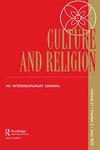Sourcing stereotypes: constructing and challenging simplified knowledge
IF 0.5
0 RELIGION
引用次数: 3
Abstract
ABSTRACT The social media uproar in Fall 2017 over a nursing textbook chart that presented generalised characterisations of minority groups generated an assumption that medical training needs more Religious Studies expertise. Analysing the sources that the chart cited, we trace the authors’ assertions to studies of varying quality and identify several specific processes involved in simplifying knowledge for dissemination, as the authors disregarded the limits of each specific study and ignored counter-evidence or otherwise evaded critical scrutiny. Comparing this example to examples from world religions discourse illustrates both differences and similarities in the process of constructing simplified presentations. While both presumably developed out of good intentions, they generate significant problems in their effort to shape material to support larger arguments. Thus, scholars across disciplines should critique and complicate their own processes for generating simplified knowledge.寻找原型:构建和挑战简化的知识
2017年秋季,一份护理教科书图表呈现了少数群体的总体特征,在社交媒体上引起了轩然大波,这引发了一种假设,即医学培训需要更多的宗教研究专业知识。分析图表引用的来源,我们将作者的断言追溯到不同质量的研究,并确定了简化知识传播所涉及的几个具体过程,因为作者忽视了每个特定研究的局限性,忽略了反证据或以其他方式逃避了批判性审查。将这个例子与世界宗教话语的例子进行比较,可以看出在构建简化表述的过程中既有差异也有相似之处。虽然两者都可能出于良好的意图,但它们在努力塑造材料以支持更大的论点时产生了重大问题。因此,跨学科的学者应该批判和复杂化他们自己产生简化知识的过程。
本文章由计算机程序翻译,如有差异,请以英文原文为准。
求助全文
约1分钟内获得全文
求助全文

 求助内容:
求助内容: 应助结果提醒方式:
应助结果提醒方式:


